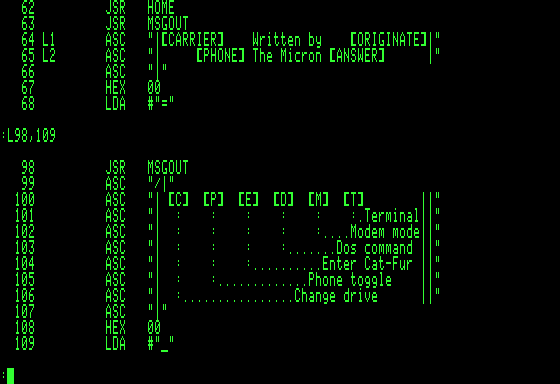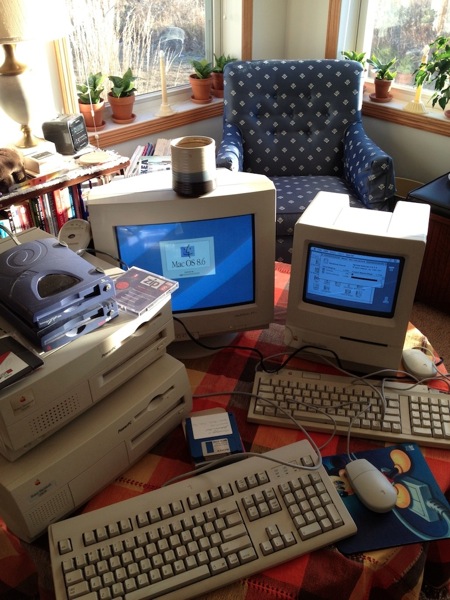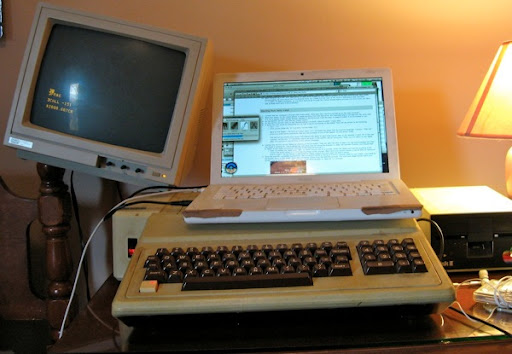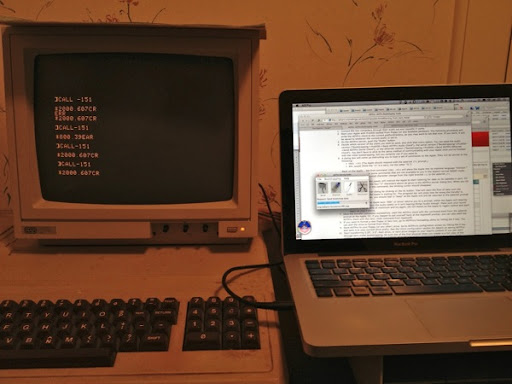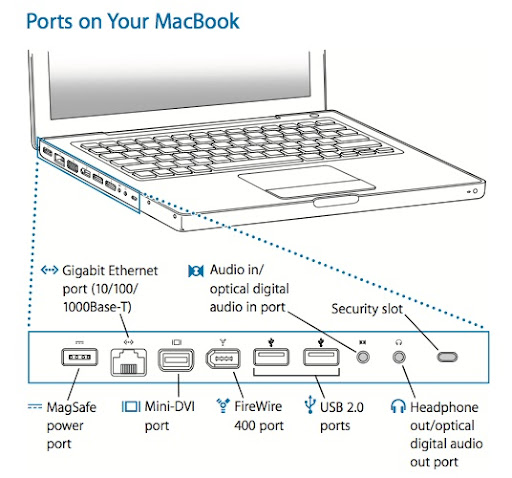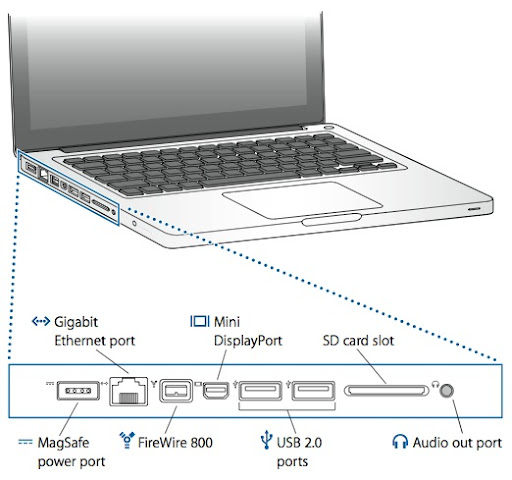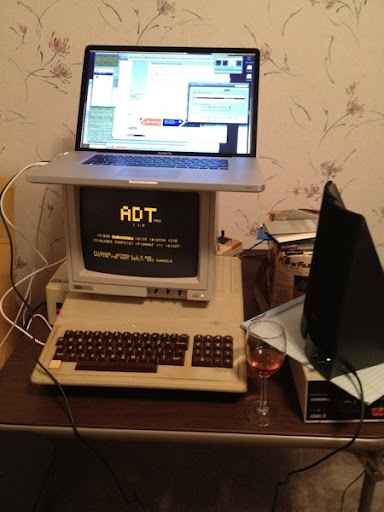Over Christmas, I was once again co-located with my childhood Apple ][ clone, and was somewhat distressed to discover that—although I had imaged a great many of the more important floppies—there were still a great many 5.25" disks that I had not imaged. And, as we all know, it's (almost) too late for these. If I ever want them, I need to image them basically now.
A little while back, I posted on Google+ extolling the virtues of the cassette ports on the Apple ][, and I was kind of enthusiastic to give it another go. After all, it had worked pretty well when I did those initial transfers back in 2009. Below was my 2009 setup. MacBook to Apple ][, connected via audio.
However, when I tried it this time, it just wasn't working. I thought I couldn't get the levels right. Or something. Over and over and over I tried to get the ADTpro imaging program over to the Apple ][, but it just would not go.
The problem, I'm convinced, is that the separated audio in and audio out ports that existed on the MacBook were replaced on the MacBookPro by a combined audio in and out port. The image below says "audio out" port, but the iPhone headphones that have an integrated microphone work in this port, so I know it can do audio in.
In principle, I should have just been able to use the MacBook Pro audio port as audio out, to boot the Apple ][ from bare metal, but it just wasn't working. And even if I'd succeeded, the image transfer program requires 2-way communication, so I needed to get both audio in and out.
It seems to me that it should be possible to get a cable that is like the iPhone mic/headphones on one end (a 3.5mm TRRS connector) and a separated TRS connector for mic and for audio out on the other end, like a Y-cable. Here is one, but I didn't have the time to get it by mail order during the holiday season. And nobody else I tried to describe it to seemed to have any idea (Radio Shack, Best Buy, even Apple).
So, I decided the next best thing was to try to find an iMic, which has separate audio in and out and operates over USB. I have one in Boston, but nobody in the Minneapolis area seemed to have them in stock, so again I was stymied. I settled instead on getting an iRig, which is designed to allow you to plug in a guitar and has a headphone jack. It is designed for iDevices, and has the TRRS connector I needed. This, in conjunction with 1/8in to 1/4in adapter, I thought, would allow me to get simultaneous input and output. Except that didn't work either.
Part of what convinced me that it had to do with the consolidated audio in/out port is that I was able to communicate with the Apple ][ using my sister's older MacBook Pro, which had separated in and out ports. Using that, I was successful at least in sending ProDOS to the Apple ][ and starting up the ADTpro program. But even her computer couldn't hear the Apple ][. Because, I think, the input is a line in, rather than a mic in. But in any event, it just wasn't hearing me. I needed to amplify the signal coming out of the Apple.
After a bit of brain-racking, I remembered that there were some old external computer speakers in a closet. And they had a headphone jack. So, here is what I ultimately wound up with: Apple ][ cassette out port to the external speakers. Volume cranked on external speakers. Headphone jack of the external speakers to my sister's computer's audio in. Her computer's audio out to the Apple ][ cassette in port.
However, even though I had gotten it this far, and it was successfully talking between the Apple and the MBP well enough to give me directory listings, when I actually tried to transfer disk images, it would make it partway and then just hang.
I tried many, many times, and slept few, few hours. But I never even managed to transfer a single disk image. So, instead (as foreshadowed by the previous post), I decided the better option would be to get a IIgs, which can read my 5.25" floppies and write to 3.5" floppies. I'm not convinced that I'll be able to read any 3.5" floppies it can write, though. I have a USB external 3.5" drive which I'm almost certain will not be able to read 800k disks. And I have an HDI-20 external drive for my Duo 2300c, that might be able to read them, but I'm not certain even of that. It's possible that real way out of this machine will be through an external Zip drive, of which I have several of both the USB and SCSI varieties. I'll report here on where this goes, for the three of you out there on the internet who find this interesting.
